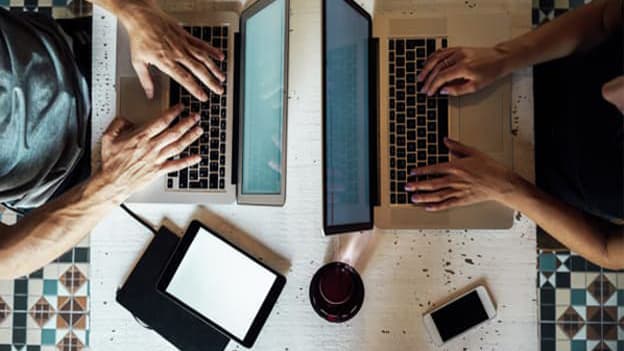Differentiating your employer brand in the next normal

With the onset of the pandemic, the definition of the workplace has taken a tectonic shift -- perhaps, forever. The coronavirus has accelerated our journey to an inevitable future, agnostic of distance and time. The attributes used to define a great workplace have been turned on its head. Today, COVID has thrown new variables into the mix that play a central role in determining an employer of choice.
In India, Global Capability Centres (GCCs) have resorted to strengthening different attributes of brand positioning to stand out in a talent market crowded with cutting-edge startups and service-oriented tech players. For one, GCCs offered a global work environment with ample opportunities for an international career path. They were also the first to embrace progressive cultural practices like WFH and employee wellness programs. However, COVID has thrown a spanner in the works of this narrative and, in one clean swoop, normalized the erstwhile differentiators and rendered existing perks meaningless.
To understand this new normal better, we need to analyze the new wave of differentiators. Let’s look at the workplace through Maslow’s Hierarchy of Needs and study the impact of COVID in the space of employer branding.
Physiological Needs
Hybrid Work Models
Over the last year, WFH has become the modus operandi across industries. Companies have been forced to adopt this way of life and adapt to the changing demands. Many went on to brace themselves for a long stint of WFH by equipping their employees with infrastructure. In this light, WFH is no longer a privilege one enjoys but rather the only option. Companies can no longer proudly flaunt their telecommuting policy and its contribution to work-life balance. Employees are at the risk of burnout because of fading boundaries between work and home and increased work-life stress.
The best companies are going over and above by defining hybrid work policies that allow for flexible work in the long term. They are using this temporary blip as an opportunity to embrace new ways of working. In the hybrid model, organizations will combine remote and on-site working. Employees are likely to come to the office only 2-3 days a week, or perhaps every alternate week. As we transition to the hybrid model of working, there are more questions than answers in the leaders’ minds. However, it’s safe to say that the future of work is hybrid, and hybrid working policies will prove to be a massive differentiator in the near future.
Remote-first companies are challenging the traditional paradigms of working in an office. They offer us a window into the future of work. They have created a robust working environment for mobile talent unwilling or unhappy to be bound by the office’s four walls. Figuring out the right balance between WFH and WFO, your hybrid work model, is critical for successfully attracting talent in the next normal.
Have you defined a remote working playbook and hybrid work strategy for your company yet?
The Role of the Office
The role of the office is undergoing a rapid shift as well. Today, the office is not just an enabler for great work. However, it is also a platform for team building, collaboration, and creativity. It is a social platform that serves as a release from the drudgery of working from home. We are witnessing the metamorphosis of the office into break-out zones where teams catch up over coffee, ideate over foosball, chalk out plans on paper napkins – work can always happen from home. Offices are becoming venues to hang out and catch up, meeting grounds for collaboration, bonding, and celebration. While productivity was the office mantra of yesteryear, today, it is collaboration, celebration, and connection.
Are your workspaces designed to attract, engage and inspire top minds of the next normal world?
Safety Needs
Wellbeing
Companies are revisiting insurance plans and employee wellness programs. Today, ‘people over profits’ has become a stark barometer for candidates as they rank top employers. In addition to safety and hygiene practices at work, companies are going the distance to ensure safety in the physical, financial and mental health of a workforce that is stressed like never before. In addition to the uncertainty caused by the economy, the pandemic has removed all avenues for catharsis, leading to families facing financial and psychological ruin.
Working Hours
Traditional working hours are no longer ‘normal,’ with calls extending late in the evening, often disrupting precious personal and family time. As a result, some companies are stepping forward to institute policies that restrict working hours and ensure that employees have time to recuperate.
How is your company making sure that your employees are well-protected from the additional strains placed on them by the current environment?
Love and Belonging
Where’s my team?
Is your culture adapting to the demands of the mobile-native generation? Do you have the processes, policies, and infrastructure in place to enable culture-building across distributed locations? Nothing has been more impacted by the pandemic than work culture. The social distancing and WFH routines have made the workplace more work and less team. This will be a huge focus area for companies as they ready their teams and workplaces for virtual engagement and culture building.
Communication
Leaders today do not have the luxury of “management by walking around.” This lack of connection should be urgently addressed through alternate, sometimes more powerful channels. Companies should understand the virtue of building a structured internal communications engine that ensures an agile and transparent culture.
Family First
The lines between work and life are blurring. Workplaces that implement policies and practices that engage with employees’ families are sure to benefit from higher retention rates. Initiatives such as family day, kids at work, and family benefits positively impact the employee’s commitment and connection to the organization.
How is your company extending definitions of “inclusion” and “family” to help employees feel connected more seamlessly between work and home?
Esteem
Recognition Systems
The opportunity is ripe for companies to embrace social media’s potential in their internal channels of communication. Be it Microsoft Teams, Slack, or Workplace, social recognition is a powerful device that can lift a distributed, virtual team’s morale. In addition, companies should look at avenues to replace the traditional pat on the back with a more impactful virtual ‘High Fives’ or kudos.
Remote working can increase stress and reduce wellbeing, resulting in plummeting employee morale and esteem. Companies are today using social platforms to share success stories with a more extensive network. Social media plays a crucial role in amplifying these success stories to an employee’s first and second-degree networks. Companies that tell their stories on such platforms gain more brand ambassadors and followers in the talent community.
Are you building pride in your workforce? Are your employees your brand ambassadors in their communities?
Self-actualization
Learning and Growth Opportunities
The ongoing COVID-19 pandemic has exposed both your employees and candidates to several challenges as well as opportunities. With more millennials in the workforce, the need to quench their thirst for professional development has increased tremendously. Does your organization encourage employee autonomy? Do employees have the power to determine their career paths? Do you provide your employees with access to learning platforms to keep pace with the e-learning culture?
CSR
Corporate Social Responsibility (CSR) plays a key role in employer branding and overall business performance. Therefore, CSR should be core to the business rather than a standalone initiative. Research shows that organizations that uphold employee welfare, community development, diversity, and environmental sustainability have a better chance at success than those that don’t.
Is your workplace just about the business, or are you helping your employees, the community, and the industry navigate their way through the pandemic?
















